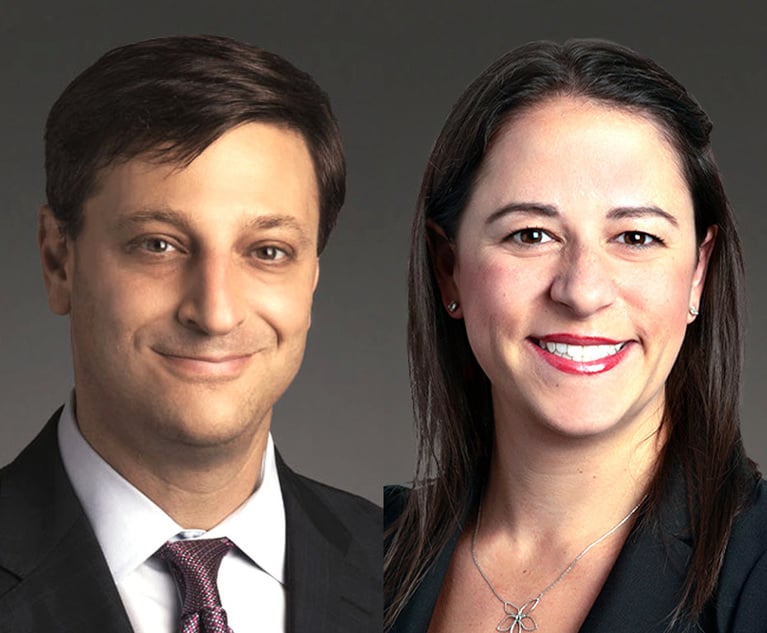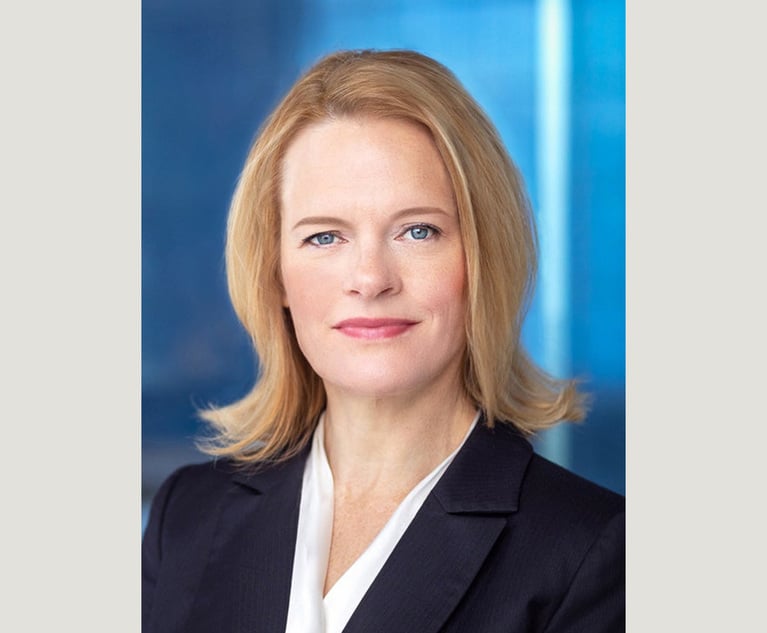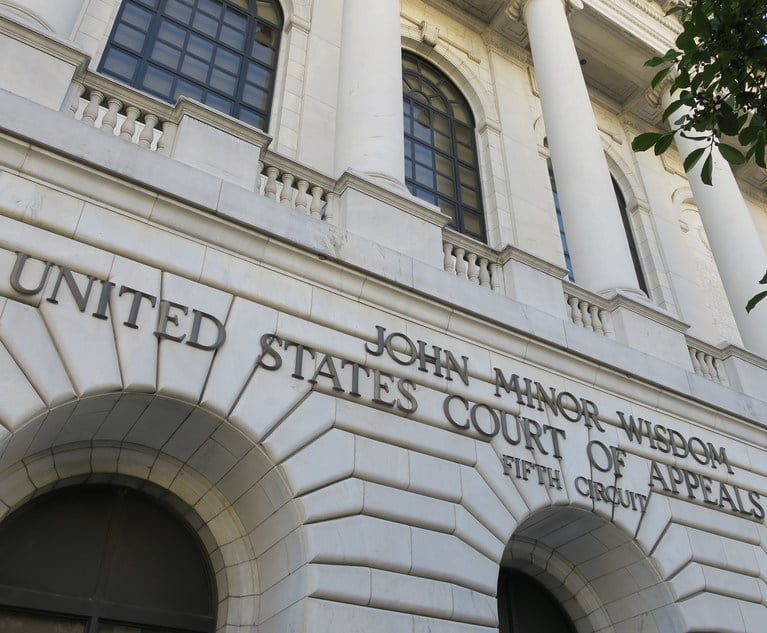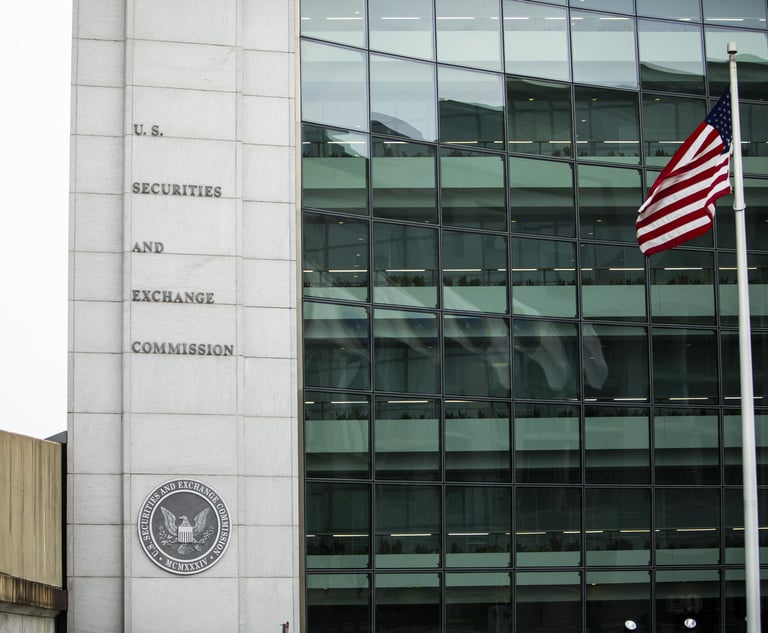 Paul Tuchmann, left, and Hannah Blonshteyn, right, of Wiggin and Dana. Courtesy photos
Paul Tuchmann, left, and Hannah Blonshteyn, right, of Wiggin and Dana. Courtesy photos Money Laundering in the Arts
Two newer kinds of markets—the market for non-fungible tokens (NFTs) and the secondary market for sports and entertainment event tickets—have offered criminals new possibilities for laundering dirty money. And so far, the law has not kept up.
March 29, 2024 at 10:00 AM
8 minute read
To the casual observer, the term "money laundering" typically brings to mind a certain kind of criminal—maybe Pablo Escobar—who traffics in drugs and then "invests" the cash proceeds in a legitimate business—say, a laundromat—in order to "clean" his drug profits so they can't easily be traced. This stereotypical kind of money laundering has been criminalized in the United States since the 1930s. But today money laundering takes many forms and can be found in unexpected places, including the fine arts and antiquities markets.
These markets have long been susceptible to money laundering: criminals used the proceeds of their crimes to buy valuable antiquities or pieces of fine art from dealers who did not ask questions about the source of the buyer's funds or keep good records, if any at all, of the buyer's identity; then, when the criminal resold the piece, they netted "clean" proceeds. (See generally, Financial Action Task Force (FATF), "FATF Report: Money Laundering and Terrorist Financing in the Art and Antiquities Market" (February 2023)).
This content has been archived. It is available through our partners, LexisNexis® and Bloomberg Law.
To view this content, please continue to their sites.
Not a Lexis Subscriber?
Subscribe Now
Not a Bloomberg Law Subscriber?
Subscribe Now
NOT FOR REPRINT
© 2025 ALM Global, LLC, All Rights Reserved. Request academic re-use from www.copyright.com. All other uses, submit a request to [email protected]. For more information visit Asset & Logo Licensing.
You Might Like
View All
Crypto Industry Eyes Legislation to Clarify Regulatory Framework

SEC Official Hints at More Restraint With Industry Bars, Less With Wells Meetings
4 minute read
Legal Issues to Watch in the US Appeals Courts in 2025
Trending Stories
- 1State AG Hammers Homebuilder That Put $2,000-Per-day Non-Disparagement Penalty in Buyer Contracts
- 2Selendy Gay Files Lawsuit Challenging Trump's Workforce Reclassification EO
- 3Trump's DOJ Withdraws Opposition to Law Banning Trans Care for Minors
- 4Perkins Coie Backs Challenge to Trump's Ban on Transgender Military Service
- 5New Charges Expected in Sex Trafficking Case Against Broker Brothers
Who Got The Work
J. Brugh Lower of Gibbons has entered an appearance for industrial equipment supplier Devco Corporation in a pending trademark infringement lawsuit. The suit, accusing the defendant of selling knock-off Graco products, was filed Dec. 18 in New Jersey District Court by Rivkin Radler on behalf of Graco Inc. and Graco Minnesota. The case, assigned to U.S. District Judge Zahid N. Quraishi, is 3:24-cv-11294, Graco Inc. et al v. Devco Corporation.
Who Got The Work
Rebecca Maller-Stein and Kent A. Yalowitz of Arnold & Porter Kaye Scholer have entered their appearances for Hanaco Venture Capital and its executives, Lior Prosor and David Frankel, in a pending securities lawsuit. The action, filed on Dec. 24 in New York Southern District Court by Zell, Aron & Co. on behalf of Goldeneye Advisors, accuses the defendants of negligently and fraudulently managing the plaintiff's $1 million investment. The case, assigned to U.S. District Judge Vernon S. Broderick, is 1:24-cv-09918, Goldeneye Advisors, LLC v. Hanaco Venture Capital, Ltd. et al.
Who Got The Work
Attorneys from A&O Shearman has stepped in as defense counsel for Toronto-Dominion Bank and other defendants in a pending securities class action. The suit, filed Dec. 11 in New York Southern District Court by Bleichmar Fonti & Auld, accuses the defendants of concealing the bank's 'pervasive' deficiencies in regards to its compliance with the Bank Secrecy Act and the quality of its anti-money laundering controls. The case, assigned to U.S. District Judge Arun Subramanian, is 1:24-cv-09445, Gonzalez v. The Toronto-Dominion Bank et al.
Who Got The Work
Crown Castle International, a Pennsylvania company providing shared communications infrastructure, has turned to Luke D. Wolf of Gordon Rees Scully Mansukhani to fend off a pending breach-of-contract lawsuit. The court action, filed Nov. 25 in Michigan Eastern District Court by Hooper Hathaway PC on behalf of The Town Residences LLC, accuses Crown Castle of failing to transfer approximately $30,000 in utility payments from T-Mobile in breach of a roof-top lease and assignment agreement. The case, assigned to U.S. District Judge Susan K. Declercq, is 2:24-cv-13131, The Town Residences LLC v. T-Mobile US, Inc. et al.
Who Got The Work
Wilfred P. Coronato and Daniel M. Schwartz of McCarter & English have stepped in as defense counsel to Electrolux Home Products Inc. in a pending product liability lawsuit. The court action, filed Nov. 26 in New York Eastern District Court by Poulos Lopiccolo PC and Nagel Rice LLP on behalf of David Stern, alleges that the defendant's refrigerators’ drawers and shelving repeatedly break and fall apart within months after purchase. The case, assigned to U.S. District Judge Joan M. Azrack, is 2:24-cv-08204, Stern v. Electrolux Home Products, Inc.
Featured Firms
Law Offices of Gary Martin Hays & Associates, P.C.
(470) 294-1674
Law Offices of Mark E. Salomone
(857) 444-6468
Smith & Hassler
(713) 739-1250







